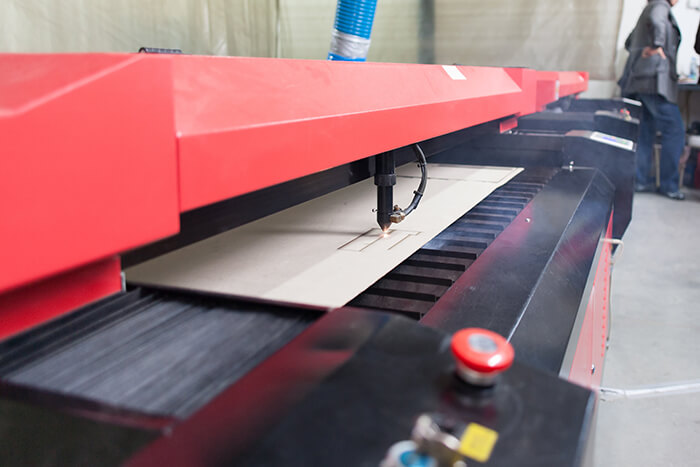Depending on the power of the laser, the cutter works on wood, Plexiglas, metal, aluminum, plastic, paper, steel, stainless steel, leather, polycarbonate, cardboard, fabric, glass, etc. Most often, laser cutting is done on horizontal, planar surfaces. However, it is possible to engrave three-dimensional surfaces.
Like with 3D printers, we make the distinction between personal and professional laser cutters. The materials used vary, depending on whether it’s for personal or professional use. When used professionally, the cutter is bigger, and the range of materials that can be use is much larger. Personal laser cutters cut mainly paper, cardboard, and paper labels. They are very useful for DIY projects and allow everyone to easily express their creativity. Professional laser cutting machines cut larger and stronger materials.
Many industries have integrated laser cutting into their production processes, especially the manufacturing, automotive, and electronics industries, the field of health, and even the military. You can therefore imagine the wide range of possibilities for use and creation that are offered by laser cutting.
The technology of laser cutting has become more and more precise. Special functions such as positioning by red laser pointer, automatic vertical adjustment (auto-focus), time indicator, and the end-of-work notification allow optimization of adjustment and make-ready times.
To use a laser cutting machine, it is necessary to really know how to prepare the digital file. There are courses for this in fablabs or makerspaces.


 Connect with Google
Connect with Google Connect with Facebook
Connect with Facebook